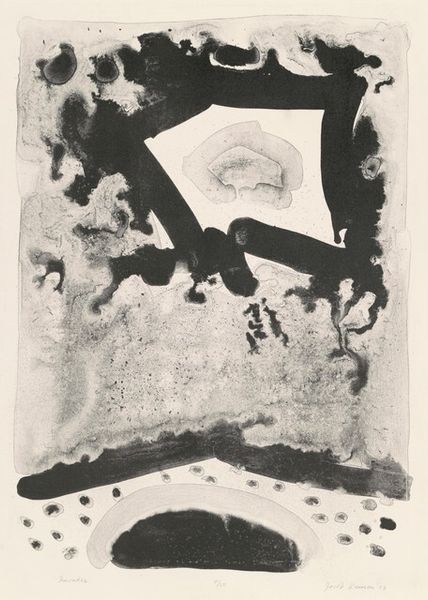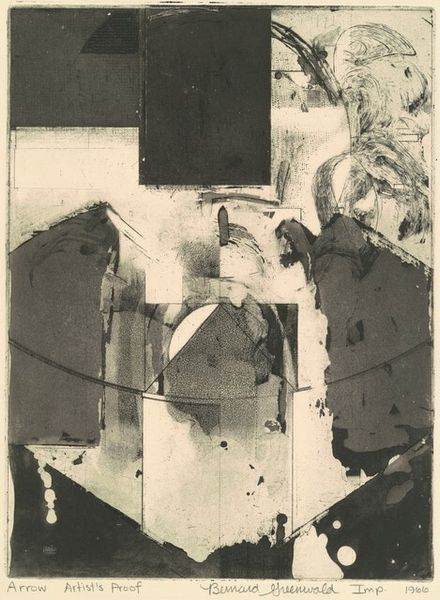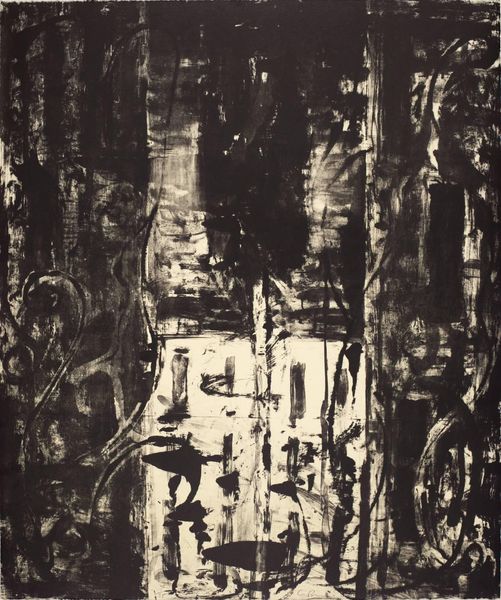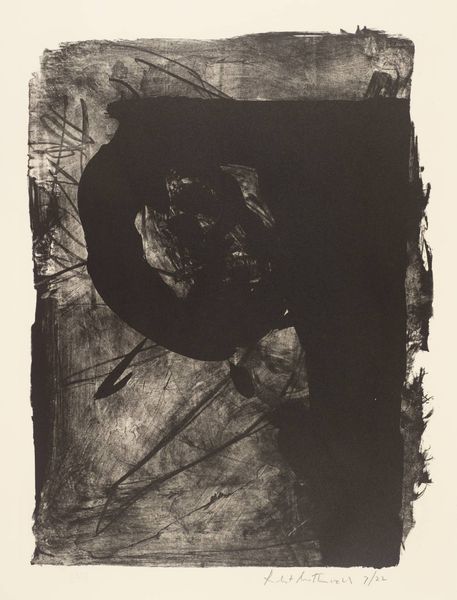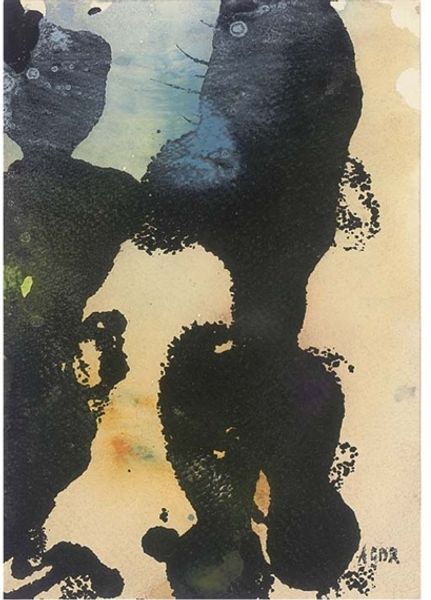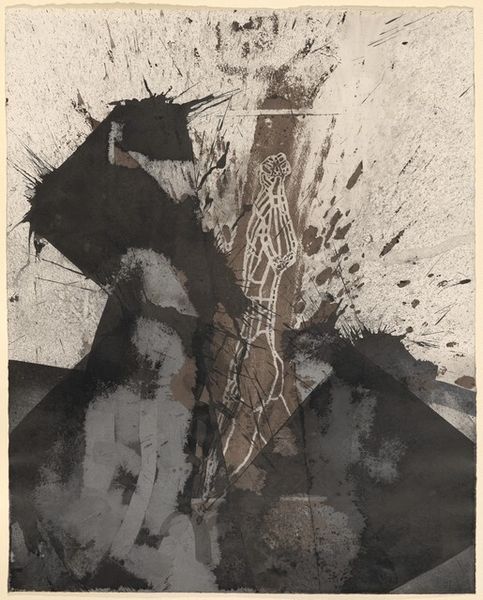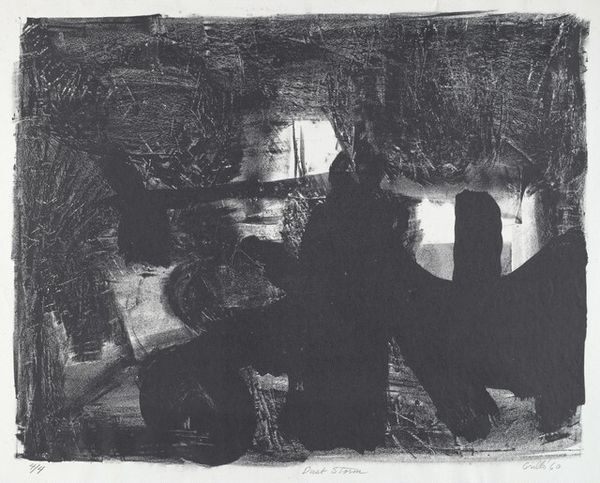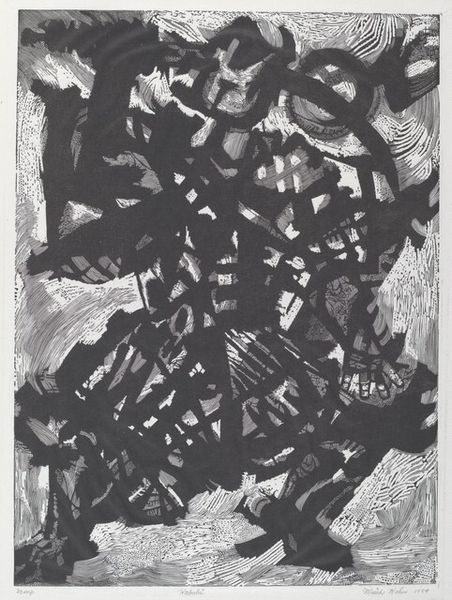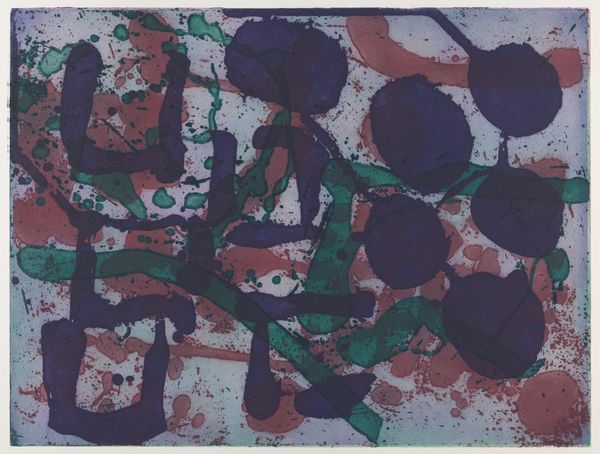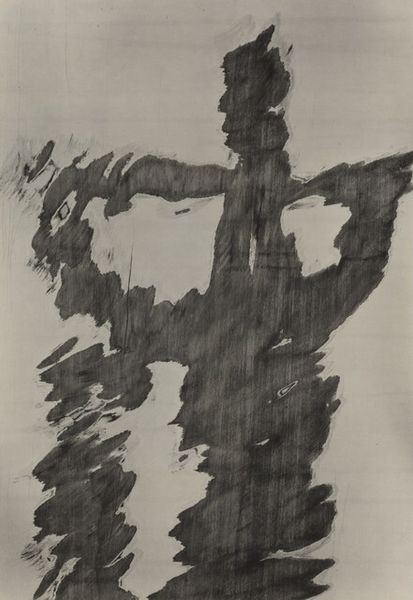
Dimensions: support: 1022 x 505 mm
Copyright: © ADAGP, Paris and DACS, London 2014 | CC-BY-NC-ND 4.0 DEED, Photo: Tate
Curator: What strikes you first about Jean Dubuffet's "Man with a Hod," a large collage piece? Editor: The somber monochrome, the figure's stiff, almost robotic posture. It feels…oppressed. Curator: Consider the title. A "hod" carries bricks, a symbol of manual labor. Dubuffet often highlighted the working class, using unconventional materials and methods to challenge the traditional art establishment. Editor: Yes, situating this piece within his broader interest in marginalized figures gives the work a compelling political dimension, highlighting the often unseen labor that builds our world. Curator: Precisely. His rough style embodies the gritty reality of that labor, rejecting the polished, idealized images of the elite. He is elevating the status of the 'everyman' through his artistic choices. Editor: That's it. The "common man" is the main subject, and this artwork is a social commentary on his difficult life. Curator: A potent commentary on the human condition viewed from a materialist perspective. Editor: I agree. It gives us a new lens for exploring art.
Comments
tate 6 months ago
⋮
http://www.tate.org.uk/art/artworks/dubuffet-man-with-a-hod-t00243
Join the conversation
Join millions of artists and users on Artera today and experience the ultimate creative platform.
tate 6 months ago
⋮
Dubuffet's imprint assemblages, of which this is an example, grew out of a small series of assemblages of butterflies' wings which he had been making in Chaillol in the autumn of 1953. Once the butterfly season was over, he began as a substitute to use pieces of paper spotted and mottled with ink, which he usually cut up with a pair of scissors and assembled together. The first imprints were made in October 1953, and from December onwards he began to produce preparatory sheets by taking imprints from sheets of glass or Rhodoid covered with India ink and sprinkled with dust, sugar or other material of this type. Gallery label, August 2004

